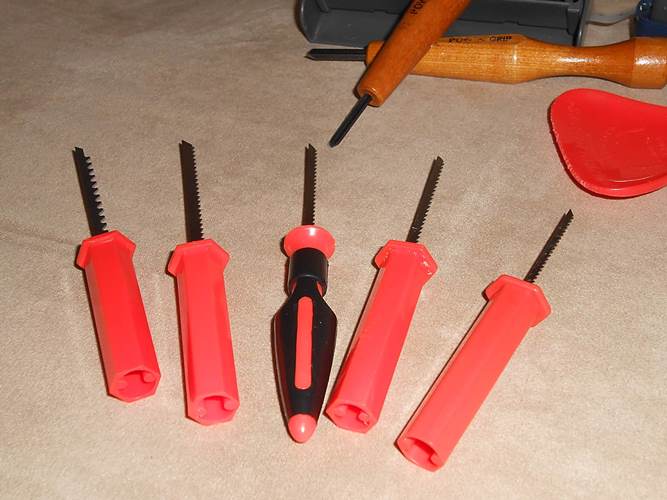The dorsal and ventral fins were constructed of three pieces of 1/8" balsa, like so:

Although it's hard to tell from that picture, these came out really good. My technique in constructing multi-piece curved fins has gotten *much* better. It occurred to me, while looking at them, that they're remarkably similar to the fins/pylons on the Avalon. This rocket makes a good companion to that one; it they were in a catalog they'd be on the same page.
These fins came out *so* nice that I was actually afraid to paper them, for fear of ruining them.
Ah, who am I kidding.

I vowed not to yammer on about papering in this thread, but I will at least say that these are probably the best papered fins I've done. My technique continues to improve, particularly with regard to sanding/trimming the edges of the paper.
Oh, the paper does not go to the top because these fins were purposely cut too tall. When the rocket is in a more advanced stage of construction, I'll see exactly how tall they need to be and them trim/sand them down to fit. The key is for them to make a nice joint with the ring.
I won't bother to write out all my stupid details of what I did differently/better in constructing and papering these fins unless requested to, because honestly I have no idea if anyone cares about such minutiae.

Although it's hard to tell from that picture, these came out really good. My technique in constructing multi-piece curved fins has gotten *much* better. It occurred to me, while looking at them, that they're remarkably similar to the fins/pylons on the Avalon. This rocket makes a good companion to that one; it they were in a catalog they'd be on the same page.
These fins came out *so* nice that I was actually afraid to paper them, for fear of ruining them.
Ah, who am I kidding.

I vowed not to yammer on about papering in this thread, but I will at least say that these are probably the best papered fins I've done. My technique continues to improve, particularly with regard to sanding/trimming the edges of the paper.
Oh, the paper does not go to the top because these fins were purposely cut too tall. When the rocket is in a more advanced stage of construction, I'll see exactly how tall they need to be and them trim/sand them down to fit. The key is for them to make a nice joint with the ring.
I won't bother to write out all my stupid details of what I did differently/better in constructing and papering these fins unless requested to, because honestly I have no idea if anyone cares about such minutiae.














